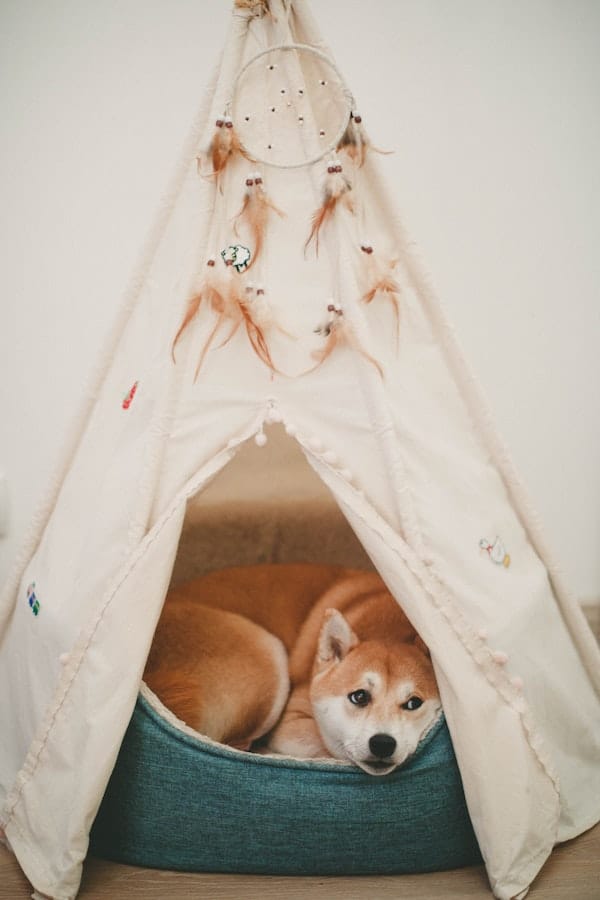
Have you ever observed your furry friend shadowing your every move around the house?
If this has raised questions about why your dog appears exceptionally attached, you’re not alone.
While dogs are renowned for their steadfast loyalty and affection, there are moments when their bond with you appears to intensify beyond expectation.
In this article, we’ll delve into the factors underpinning your dog’s clingy behavior and delve into practical approaches to address it.
Let’s embark on the journey of deciphering the enigma surrounding your canine companion’s velcro-like tendencies!
Why Is a Dog Extra Clingy?

Dogs, being social animals, often exhibit clingy behavior for various reasons. Understanding these factors can help you decipher your dog’s behavior:
Separation anxiety
Dogs can indeed exhibit clingy behavior when they experience a fear of separation from their beloved owners.
This anxiety is rooted in a profound attachment to their human companions, a bond that transcends the ordinary and often leads to a constant desire for proximity.
Health issues
It’s worth noting that a dog’s penchant for clinginess might also be indicative of underlying health concerns.
Our furry friends, unable to verbally express their ailments, may resort to seeking comfort and reassurance when they aren’t feeling their best.
This innate instinct to draw closer to their trusted human can serve as a clear signal that something might be amiss in their physical or emotional well-being.
Boredom
Boredom often serves as the starting point for our dogs’ clingy tendencies.
When they lack mental or physical stimulation, it’s common for them to seek comfort in our presence to break the monotony of their day.
It’s almost as if they’re conveying, “I’d prefer your company over facing the dullness of an empty room.”
This clingy behavior is their way of expressing their need for interaction, whether it’s through an exciting game of fetch or the mental engagement provided by a stimulating puzzle toy.
Change in routine
Our canine companions thrive on routine, and any deviation from their established schedule can be a catalyst for clingy behavior.
Even a subtle shift, like alterations in your work hours or daily habits, can trigger a period of adjustment during which they may gravitate toward you for a sense of security and reassurance.
In these moments, they rely on your presence as an anchor amid the sea of change.
Lack of socialization
Adequate socialization is crucial for a dog’s emotional well-being, and a lack thereof can lead to clinginess stemming from discomfort or anxiety in the presence of other people or animals.
Dogs that haven’t had the opportunity to interact with a variety of individuals and fellow canines may find solace and security in the familiar presence of their owner.
In such cases, they cling as a response to the unease they feel in unfamiliar social situations.
What Can You Do if Your Dog is Extra Clingy?

Now that we’ve explored the ‘why,’ let’s dive into the ‘what.’ Here are some practical tips to help you manage your dog’s clingy behavior:
Gradual desensitization
One effective strategy to address your dog’s clinginess and separation anxiety is through the process of gradual desensitization.
This method involves teaching your canine companion that being alone is not a cause for distress but rather something to be comfortable with.
To begin, start with short intervals of separation and gradually extend the time you spend apart.
For instance, leave the room for a few minutes, and then return, gradually increasing the duration of your absence over time.
This gradual approach helps your dog build confidence in your eventual return and eases their anxiety about being alone.
Create a safe space
Another essential element in combating clinginess is to establish a safe and cozy space for your dog.
This area should serve as their sanctuary, a place where they can retreat when they need some alone time or simply want to relax.
Equip this space with their favorite toys, a comfortable bed, and perhaps an item of your clothing to provide a sense of familiarity and security.
Encourage your dog to use this space voluntarily, reinforcing the idea that it’s a pleasant and safe spot where they can unwind without being overly reliant on your constant presence.
Regular exercise
A cornerstone in addressing your dog’s clinginess and promoting their overall well-being is to ensure they receive an adequate amount of physical and mental exercise.
Dogs, irrespective of their breed or size, thrive on engaging in activities that challenge their bodies and minds.
Daily walks, interactive play sessions, and puzzle toys are excellent ways to keep your furry friend physically and mentally stimulated.
These activities not only tire them out but also provide a healthy outlet for their energy, reducing restlessness that might contribute to clinginess.
Training and socialization
Enrolling your dog in obedience training not only enhances their behavior but also fosters confidence and independence.
Training sessions offer mental stimulation and help your dog understand boundaries, which can alleviate anxiety and clinginess.
Furthermore, exposing your dog to different people, places, and experiences through socialization is pivotal.
This exposure broadens their horizons, making them more adaptable and less reliant on your constant presence for comfort.
Socialization is an investment in their emotional growth, aiding in the development of a well-adjusted and self-assured canine companion.
Consult a professional
When your dog’s clinginess becomes particularly pronounced or lingers despite your best attempts, it’s a prudent step to consider seeking assistance from a professional dog trainer or consulting with a veterinarian.
These experienced individuals possess a wealth of knowledge when it comes to understanding your dog’s distinct needs and behaviors.
They’re equipped to provide tailored insights and effective strategies, aiming to uncover the root causes of your dog’s clinginess and aiding in the cultivation of a more harmonious and balanced relationship between you and your furry companion.
Conclusion
To wrap things up, it’s crucial to grasp that your dog’s heightened clinginess shouldn’t immediately be categorized as a problem.
More often than not, it’s a heartfelt expression of their profound affection and yearning for companionship.
By taking the time to delve into the underlying reasons driving this behavior and implementing suitable techniques, you can assist your faithful four-legged companion in fostering self-assurance and independence, all the while preserving the unique and cherished bond that binds you both together.
FAQs
Yes, it’s normal for dogs to exhibit varying levels of clinginess. However, excessive clinginess may indicate an underlying issue.
Absolutely! With patience and consistent training, you can help your dog become more independent and comfortable on their own.
Sudden changes in behavior should be monitored. If the clinginess persists or is accompanied by other concerning symptoms, consult a vet.


GIPHY App Key not set. Please check settings